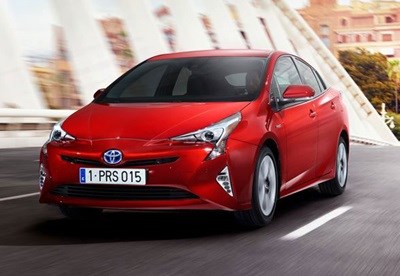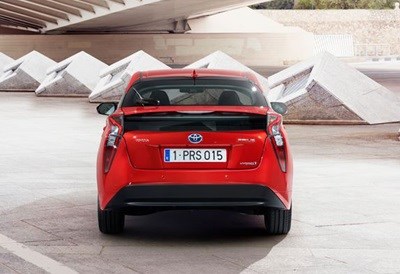Prius went on sale internationally in 1997 as the world's first mass-produced hybrid passenger vehicle. By offering outstanding environmental performance in an affordable package, it changed perceptions and helped raise the status of alternative energy vehicles from niche products to game-changers. As of July 31, 2015, cumulative Prius sales exceed 3.5 million vehicles across approximately 80 countries and regions.
South African introduction of Prius occurred in 2005 in second generation guise, establishing itself as the first hybrid vehicle on the local market. The third generation model introduced more progressive styling in 2009, along with a larger capacity 1.8 litre engine.
Thanks largely to pioneers such as the Prius; today's car buyers often expect environmental performance as standard. In response to this trend, Toyota went to great lengths to ensure that the appeal of the fourth-generation model would extend well beyond the car's proven environmental credentials: the new model also boasts a stylish, attractive design in keeping with its fun-to-drive nature. Additionally, as the first global vehicle to use the Toyota New Global Architecture (TNGA), the new Prius has a completely new, more rigid platform which, combined with a class-leading low centre of gravity and a new front and rear suspension, offer a fun, refined drive.

The new Prius will go on sale in Japan at the end of 2015, and is subsequently scheduled for successive launches around the world. South African introduction is currently under study.
From the bold design to the quality interior, the Prius has never had such a powerful presence. Toyota's designers were given free rein to realise their vision, and it shows.
The new model inherits the nameplate's signature triangular silhouette which, combined with a low centre of gravity, results in an impressively angular yet emotive design.
Flowing curves blend with aggressive cut edges that spark interest from any angle. The top of the roof has been lowered by 20 mm and moved forwards, while the engine hood has also been lowered to create a stylish outline. All improvements have been achieved with no sacrifice to interior space.
The use of new headlamps minimises the Prius' frontal area and, at the same time, provides a striking lighting display which helps define the vehicle's distinctive character.
The effect borders on being radical. Meanwhile, the bold and unique rear combination lamps express the distinctive lines of the Prius from the rear spoiler to the trailing edges of the sides.
Up to eight exterior colours are available, including "Emotional Red" which utilises a newly developed treatment process to achieve a deep, vibrant lustre that highlights the external forms.
According to Kouji Toyoshima, the model's chief engineer: "There is much more to the new Prius than a green image. The exterior has a particularly emotive appearance, thanks in part to the new platform that enables a low slung silhouette similar to a sports car."
The Prius' interior adopts advanced technology complemented by features that are functional, fun and have high visual impact. Once inside you feel immediately comfortable, cossetted and impressed by styling cues seldom, if ever, seen before in a vehicle.
A sense of quality and space is created through the wide instrument panel with its layered construction that clearly defines the "display zone", separating it from the "control zone" which is now closer to the driver. White ornamentation used in the lower sections of the cabin evokes an impression of fine bone china.
To greatly improve core vehicle performance and enhance product appeal, Toyota is implementing the Toyota New Global Architecture, an innovative, integrated, development program for powertrain components and vehicle platforms.

As the first global product of this activity, the new Prius has received an entirely new Toyota platform. This has resulted in improved handling, safety and heightened driving enjoyment. Nearly every aspect of the new Prius has been improved in surprising and significant ways.
The new Prius features a chassis that is 60% more rigid, while the powertrain unit's lower placement and low centre of gravity has increased the vehicle's stability and comfort.
Almost every internal component of the Prius engine is new or substantially revised - effectively blueprinted to the finest limits and tolerances. A comprehensive programme of size and weight reductions for major hybrid components was achieved while maintaining overall performance.
As a result, the Prius has achieved a remarkable world's best, with over 40% thermal efficiency and a huge boost in fuel economy, contributing significantly to overall driver enjoyment and fewer visits to the fuelling station.
The new Prius is 60mm longer, 15mm wider and 20mm lower than the model it replaces, providing a much more planted on-road presence while also delivering more occupant and luggage room.
A class-challenging low centre of gravity and completely new and far more responsive front and rear suspension package provides a significantly improved driving experience. The height of the Prius' front badge is exactly the same as that of Toyota's 86 sports car-an indication of the advancement made in achieving optimum reduction in height and mass.

The new front suspension and rear double wishbone suspension gives the new Prius a greater connection to the road, providing greater control and feedback in all driving conditions.
Improvements to chassis rigidity mean that the Prius is noticeably more responsive in corners. Whether meandering up a mountain pass or exploring the urban jungle, the new Prius' handling is taken to an all-new level while maintaining excellent occupant comfort.
In addition to creating a dynamic, exciting driving experience, TNGA provides a high-strength framework and stiffened structure to help enhance occupant protection in the event of a collision. The high strength upper body is designed to distribute frontal collision impact energy. Additional reinforcements have been adopted to distribute side collision impact energy.
Prius Preliminary Dimensions (North American market)
| Dimension | Value | Change |
|---|---|---|
| Length | 4,540 mm | +60 mm |
| Width | 1,760 mm | + 15 mm |
| Height | 1,470 mm | - 20 mm |
| Wheelbase | 2,700 mm | 0 mm |